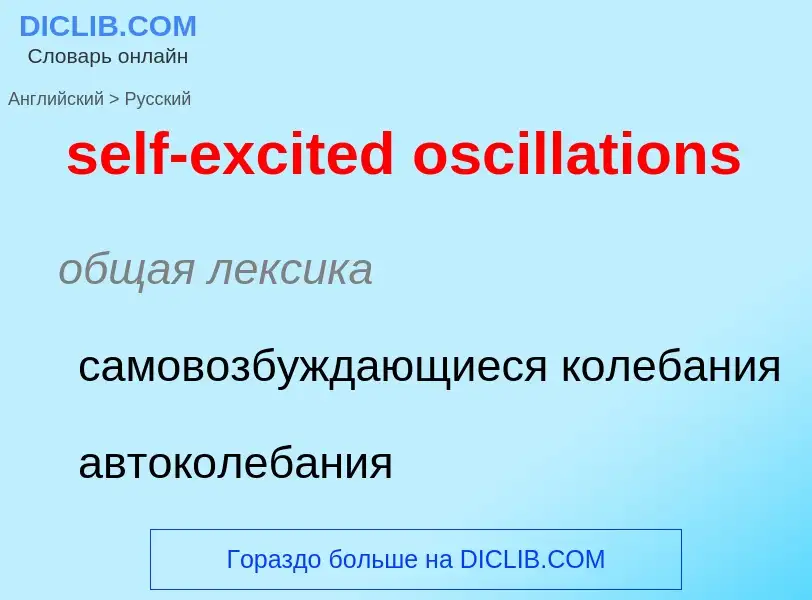Vertaling en analyse van woorden door kunstmatige intelligentie ChatGPT
Op deze pagina kunt u een gedetailleerde analyse krijgen van een woord of zin, geproduceerd met behulp van de beste kunstmatige intelligentietechnologie tot nu toe:
- hoe het woord wordt gebruikt
- gebruiksfrequentie
- het wordt vaker gebruikt in mondelinge of schriftelijke toespraken
- opties voor woordvertaling
- Gebruiksvoorbeelden (meerdere zinnen met vertaling)
- etymologie
self-excited oscillations - vertaling naar russisch
общая лексика
самовозбуждающиеся колебания
автоколебания
общая лексика
самогенерация
общая лексика
самогенератор
Wikipedia
Excited delirium (ExDS), also known as agitated delirium (AgDS), is a controversial diagnosis sometimes characterized as a potentially fatal state of extreme agitation and delirium. It is typically diagnosed postmortem in young adult males, disproportionally black men, who were physically restrained at the time of death, most often by law enforcement personnel. Symptoms are said to include aggressive behavior, extreme physical strength and hyperthermia. It is not listed in the Diagnostic and Statistical Manual of Mental Disorders or the International Classification of Diseases, and is not recognized by the World Health Organization, the American Psychiatric Association, the American Medical Association, the American Academy of Emergency Medicine, or the National Association of Medical Examiners. It is accepted primarily by the American College of Emergency Physicians.
Excited delirium is particularly associated with taser use. A 2017 investigative report by Reuters found that excited delirium had been listed as a factor in autopsy reports, court records or other sources in at least 276 deaths that followed taser use since 2000. Manufactured by the firm Axon, the makers have been involved in police training in its use, publishing of numerous medical studies which promote their product, and other promotional activities.
There have also been concerns raised over the use of sedative drugs during an arrest following claims of excited delirium. The drugs ketamine or midazolam (a benzodiazepine) and haloperidol injected into a muscle (an antipsychotic) have sometimes been used to sedate a person at the discretion of paramedics and sometimes at direct police request. Ketamine can cause respiratory arrest, and in many cases there is no evidence of a medical condition that would justify its use. The term excited delirium is sometimes used interchangeably with acute behavioural disturbance,: 1 a symptom of a number of conditions which is also responded to with involuntary injection with benzodiazapines, antipsychotics, or ketamine.: 624 : 152
A 2020 investigation by the United Kingdom's forensic science regulator found that the diagnosis should not have been used since it "has been applied in some cases where other important pathological mechanisms, such as positional asphyxia and trauma may have been more appropriate". In the U.S., a diverse group of neurologists writing for the Brookings Institution called it "a misappropriation of medical terminology, used by law enforcement to legitimize police brutality and to retroactively explain certain deaths occurring in police custody". The American Psychiatric Association's position is that the term "is too non-specific to meaningfully describe and convey information about a person."

